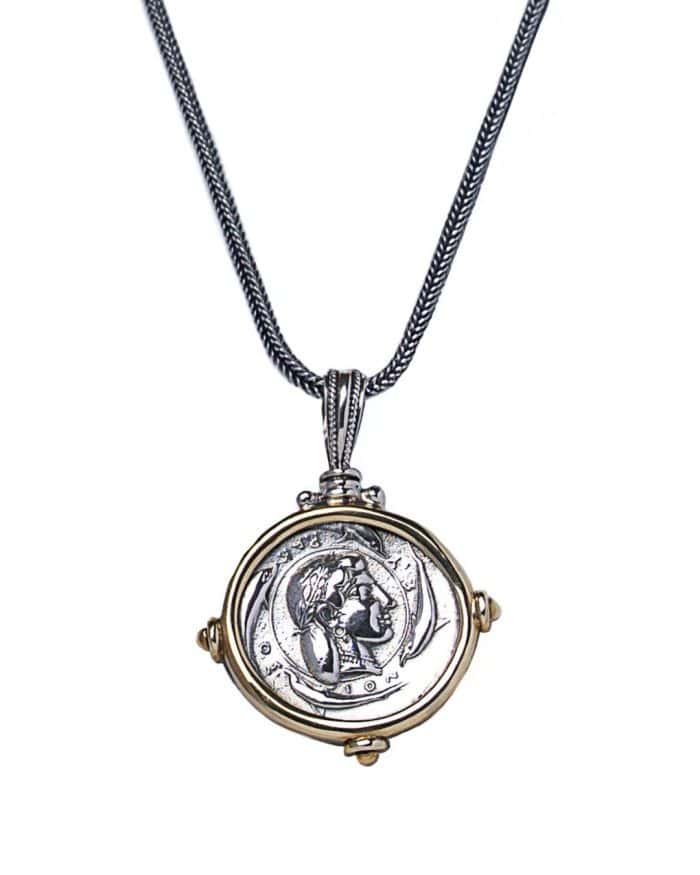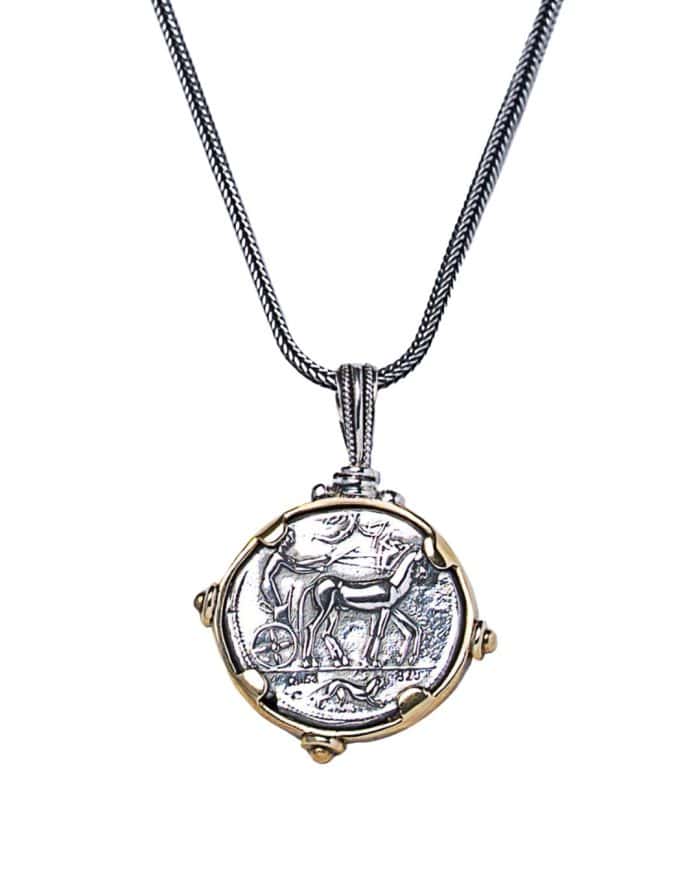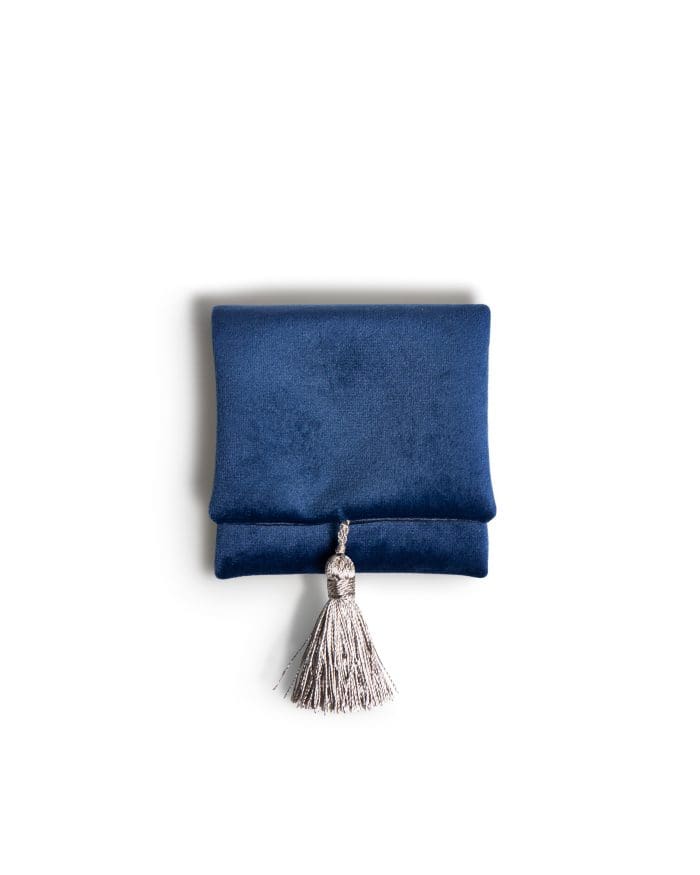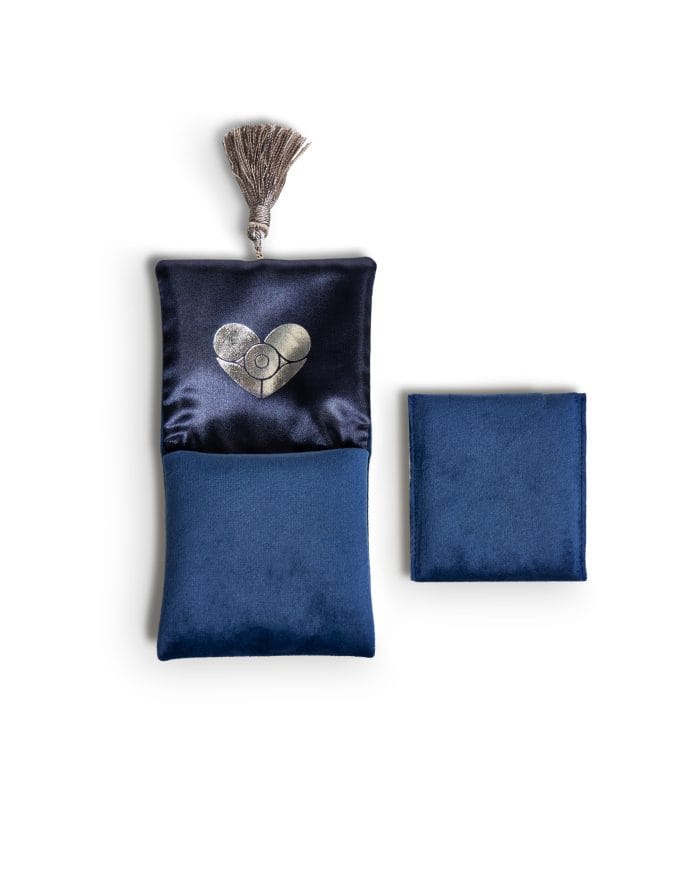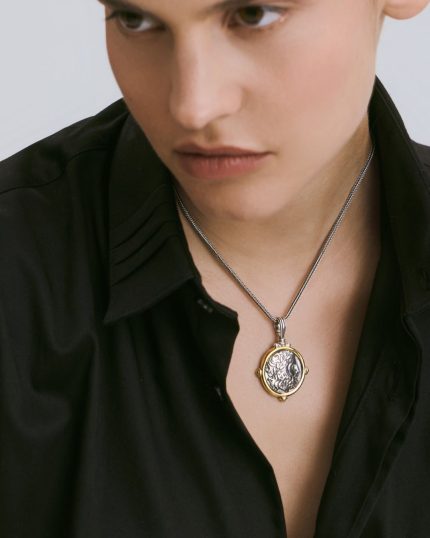Syracuse – The Demareteion Tetradrachm
155,00€
A Symbol of Victory and Wealth.
The Syracuse pendant takes its name from the famous Tetradrachm of Demareteion, a celebrated ancient coin that reflects the wealth and power of ancient Syracuse.
| Metal |
Sterling Silver 925 |
|---|
In stock
Description

A Tribute to the Tetradrachm of Demareteion
The Tetradrachm of Demareteion was issued to commemorate the victory of Syracuse over the Carthaginians at the Battle of Himera (480 BC). According to legend, the coin was minted using gold donated by Demarete, the wife of Gelon, the tyrant of Syracuse, as a gesture of gratitude for the victory. Hence the name “Demareteion.”
This coin is considered one of the most beautiful and refined examples of Greek numismatics, not only for the quality of its engraving but also for its rich symbolism:
•Obverse: The coin features the head of the nymph Arethusa, protector of Syracuse, surrounded by swimming dolphins — a symbol of the city’s connection to the sea and divine protection.
•Reverse: It depicts a charioteer driving a quadriga (a four-horse chariot), a symbol of victory and Syracuse’s military supremacy. The figure of the charioteer represents Syracuse’s political and military success, with a winged Nike crowning him as a sign of triumph.
Italy: €15 with DHL (1–3 business days)
Free DHL shipping in Italy on orders over €250
International: DHL available at additional cost, calculated at checkout
Premium Materials and Craftsmanship
Each pendant is handcrafted by our artisans, ensuring a refined and distinctive piece. The 925 sterling silver chain is durable yet elegant, perfectly complementing the sophisticated design with a touch of class and elegance.
Material: 925 sterling silver 925 – 9.3 gr & bronze – 3.7 gr.
Included Chain: 925 sterling silver.
Length: 45 cm.
Weight: 9 gr.
Thickness: 1.7 mm.




